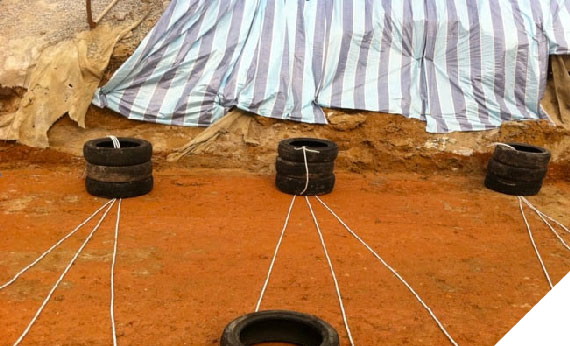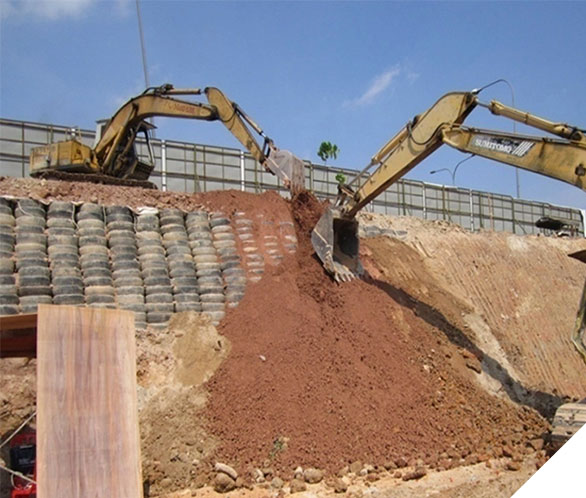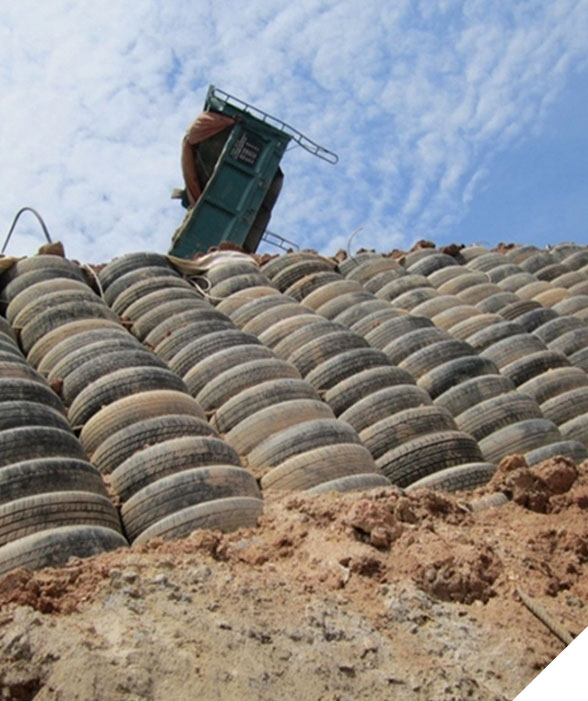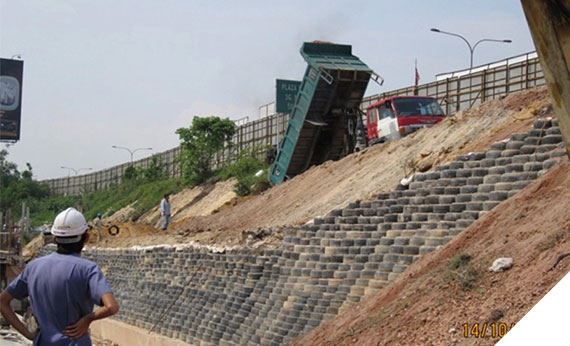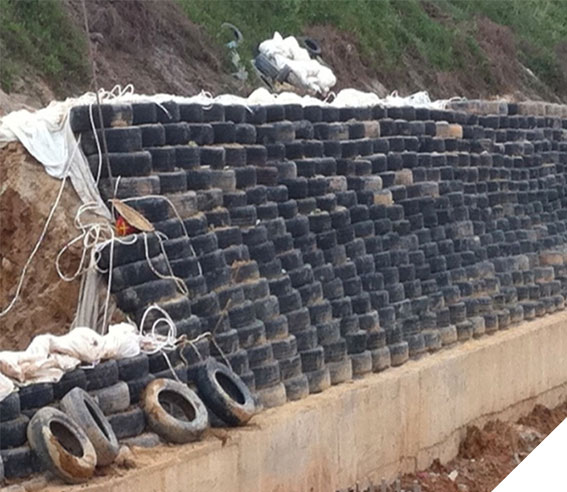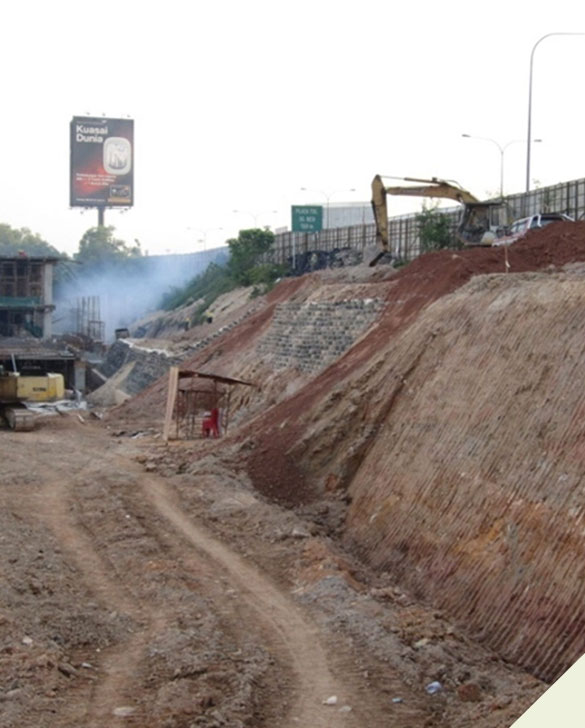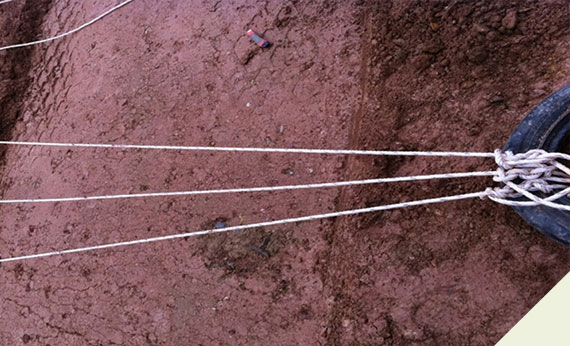Rubber tyre is among the finest engineering products man has ever produced in view of its great importance to the lives of all vehicular occupants that each and every tyre irrespective where it is made, it must be manufactured under very stringent control conditions to ensure its high quality. Similarly, from structural point of view the original mechanical properties of a worn off used tyre is relatively intact at time when it is discarded. On this ground it can justify why used tyres can still render themselves to be suitable for various civil engineering applications including for earth retaining wall construction. Perhaps, it is for these reasons that used tyres have to date found themselves been accepted and recognized as a practicable engineering material. To justify this claim, one can refer to ASTM D6270-08e1 Standard Practice for Use of Scrap Tyres in Civil Engineering Applications, an Active Standard developed by Subcommittee: D34.03.
Used tyres-based wall structures have gained wide acceptance and been popularly constructed and will continue to be constructed in many engineering advanced countries, whereby all factors affecting the suitable use of this material have been considered exhaustively before its final adoption. Additionally, the fact that there is no known major mishap on any used tyres retaining wall been reported anywhere in the world to date may well be an indirect proof for the reliability of this type of construction.


